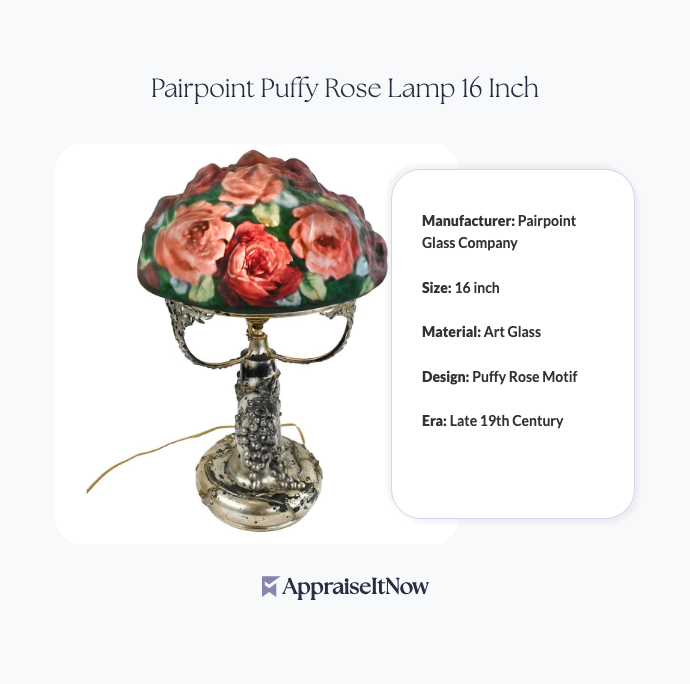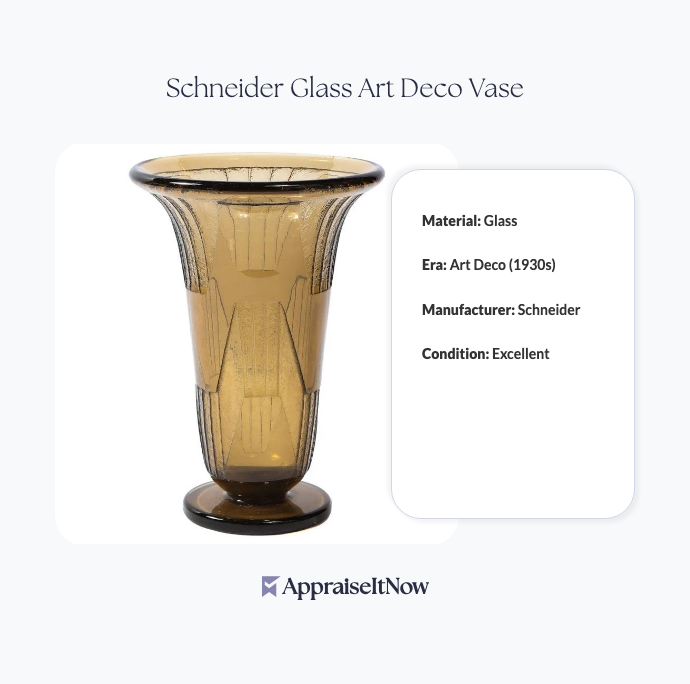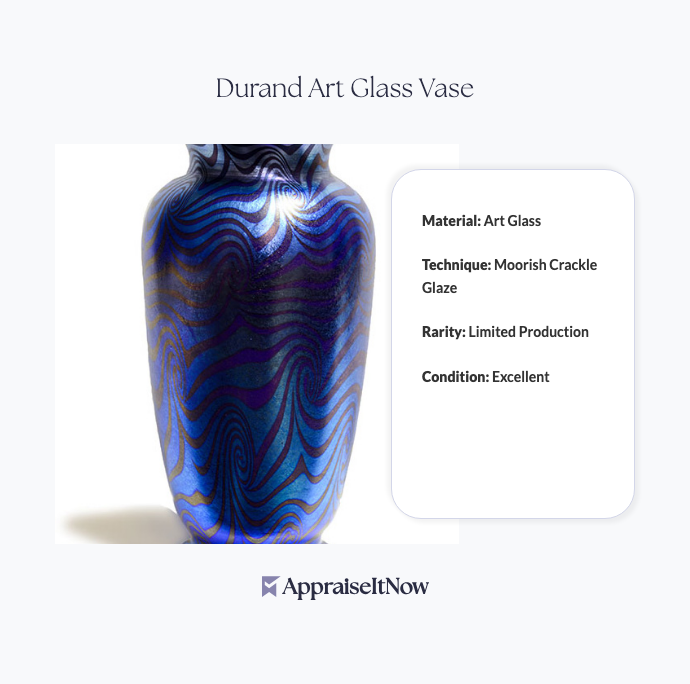<h1>How to Get Your Pairpoint Puffy Rose Lamp 16 Inch Appraised</h1>
<p>If you own a Pairpoint Puffy Rose Lamp, you're holding a significant piece of late 19th-century American craftsmanship. These handmade art glass lamps, with their distinctive etched rose motifs, command considerable market value ranging from <strong>$6,000 to $8,000</strong> depending on condition and provenance. Understanding how to get your lamp properly appraised ensures you have accurate documentation for insurance, sale, or estate planning purposes.</p>
<h2>What Makes a Pairpoint Puffy Rose Lamp Valuable</h2>
<p>The Pairpoint Manufacturing Company of New Bedford, Massachusetts, created these iconic lamps starting in 1890, and each 16-inch example represents meticulous handcraftsmanship that today's collectors treasure. Your lamp's value stems from several interconnected factors: the <strong>thick, puffy glass construction</strong> that required skilled artisans to shape by hand, the <strong>intricately etched rose design</strong> that varied from piece to piece, and the premium materials selected for both the shade and base components.</p>
<p>What distinguishes a Pairpoint lamp from lesser reproductions is the quality of execution. These weren't mass-produced items assembled on factory lines. Instead, artisans carefully etched each rose motif into the glass, creating what amounts to a unique work of art. The historical significance of the Pairpoint Company—operating during the height of the American art glass movement—adds cultural weight to your lamp's monetary worth.</p>
<div class="callout tip"><p><strong>Valuation Insight</strong></p>
<p>Pairpoint lamps introduced before 1900 with documented factory provenance typically appreciate faster than later productions, sometimes commanding 15-25% premiums in today's market.</p></div>
<h2>Documentation You'll Need for Accurate Appraisal</h2>
<p>Preparing your Pairpoint lamp for professional appraisal requires gathering specific documentation and photographs. Start by photographing your lamp from multiple angles—the shade detail showing the rose etching, the base construction, any maker's marks or signatures, and the overall assembled piece from several distances. These images should show clear, natural lighting to accurately display the glass quality and condition.</p>
<p>When submitting materials for an online appraisal through services like AppraiseItNow, include any historical information you possess about the lamp's provenance. Do you know where it came from originally? Has it been in your family for generations? Were there any previous sales or exhibition records? Each detail helps establish authenticity and value. Additionally, note any visible damage, repairs, or restoration work—appraisers need complete transparency about condition issues to provide accurate valuations. For <a href="/types/antique-artwork">antique artwork</a> and glass pieces, documentation of this caliber significantly improves appraisal reliability.</p>
<h2>Understanding Condition and Its Impact on Pricing</h2>
<p>The condition of your 16-inch Pairpoint lamp directly determines where your piece falls within the <strong>$6,000 to $8,000</strong> value range. A lamp in exceptional condition with original intact glass, clear etching, functioning electrical components, and no cracks or repairs commands the premium end of pricing. Conversely, a lamp showing signs of age—slight cloudiness in the glass, minor wear to the base, or previous repairs—may be valued toward the lower end while remaining highly collectible.</p>
<p>Specific condition concerns appraisers examine include <strong>cracks or chips in the glass shade</strong>, which significantly impact value since replacement shades rarely match the original aesthetic. <strong>Paint loss or fading</strong> on brass or metal bases, <strong>deteriorated electrical sockets</strong> if the lamp functions, and <strong>amateur restoration attempts</strong> all factor into professional assessment. Professional appraisers specializing in <a href="/types/antique-furniture">antique furniture</a> and decorative arts understand how these issues affect market perception and pricing. The key distinction is that vintage patina—natural aging and surface wear—typically enhances value, while structural damage or invasive repairs decreases it.</p>
<div class="callout note"><p><strong>Condition Reality</strong></p>
<p>Even Pairpoint lamps showing visible aging typically retain strong value if the structure remains sound and the original etching detail remains crisp and legible.</p></div>
<h2>Distinguishing Fair Market Value from Insurance Value</h2>
<p>When getting your lamp appraised, you'll encounter different valuation approaches, each serving different purposes. <strong>Fair market value</strong> reflects what a willing buyer and seller would agree upon in a typical transaction—essentially what your lamp would likely fetch at auction or through a private sale to another collector. This is your baseline valuation.</p>
<p><strong>Insurance replacement value</strong>, by contrast, often runs 10-20% higher than fair market value because it addresses the cost of replacing your specific lamp should it be damaged or stolen. Insurance companies want to ensure you can actually acquire a comparable piece at current market prices if needed. <strong>Appraised value for estate purposes</strong> may differ again, potentially used for tax or inheritance calculations. Understanding these distinctions matters because they affect how you discuss pricing with insurance agents, buyers, or legal representatives managing your estate. For comprehensive guidance on these valuation types, explore resources on <a href="/types/memorabilia-and-collectibles">memorabilia and collectibles</a> appraisal standards.</p>
<h2>When to Choose Online vs. In-Person Appraisal</h2>
<p>Modern technology makes initial Pairpoint lamp appraisals accessible online through services like AppraiseItNow, where you submit photographs, descriptions, and condition details to certified experts who evaluate the piece remotely. This approach works well for lamps in stable condition where you need general valuation for insurance or informational purposes. Online appraisals typically cost less and provide faster turnaround—often within days—making them ideal for preliminary assessments.</p>
<p>However, in-person inspection becomes valuable when your lamp represents a particularly significant investment, when you're considering sale through major auction houses, or when condition issues require detailed hands-on evaluation. In-person appraisers can examine the glass thickness, test electrical components safely, verify maker's marks under magnification, and assess color variations that photographs might not capture accurately. If your Pairpoint lamp is valued at the higher end of the range or has unusual provenance, spending the additional time and resources for professional <a href="/blog/when-to-request-in-person-appraisals">on-site evaluation</a> typically justifies itself through increased accuracy and confidence.</p>
<h2>Selecting the Right Appraiser</h2>
<p>Your appraiser should hold relevant credentials demonstrating expertise in antique glass and decorative arts. Look for professionals certified through organizations like the <strong>American Society of Appraisers (ASA)</strong>, the <strong>International Society of Appraisers (ISA)</strong>, or the <strong>American Association of Appraisers (AAA)</strong>. These credentials indicate the appraiser follows <strong>USPAP (Uniform Standards of Professional Appraisal Practice)</strong> guidelines, ensuring your appraisal meets legal and financial institution standards.</p>
<p>When evaluating appraisers, ask about their specific experience with Pairpoint lamps and American art glass from the late 19th century. An appraiser with general antique knowledge differs significantly from one specializing in art glass valuations—the latter understands nuanced market movements, recognizes production variations, and can distinguish authentic Pairpoint pieces from later reproductions or similar manufacturers. AppraiseItNow connects you with credentialed specialists across the U.S. who understand the intersection of historical significance and current market demand for pieces like your <a href="/types/antique-artwork">antique artwork</a>.</p>
<div class="callout tip"><p><strong>Credential Verification</strong></p>
<p>Always verify an appraiser's credentials through their professional organization—ASA, ISA, or AAA maintain searchable databases confirming active membership and professional standing.</p></div>
<h2>Market Factors Affecting Pairpoint Lamp Values</h2>
<p>Recent auction results show strong demand for quality Pairpoint lamps, with 16-inch puffy rose examples consistently achieving valuations within the <strong>$6,000 to $8,000</strong> range at major auction houses. The collectibles market for American art glass has experienced steady appreciation over the past decade as collectors increasingly recognize the artistic and historical value of pieces from the art nouveau and art deco periods.</p>
<p>Several market dynamics influence your lamp's current value. <strong>Growing collector awareness</strong> of American decorative arts has expanded the buyer base beyond traditional antique dealers. <strong>International interest</strong>, particularly from European collectors, has increased bidding competition at auctions. <strong>Museum acquisitions</strong> of similar pieces validate the historical importance and support pricing. Conversely, <strong>market saturation</strong> of similar Pairpoint products—though minor given the handmade nature—and <strong>changing interior design trends</strong> toward minimalism occasionally create pricing volatility. Understanding these broader market movements helps contextualize your appraisal within realistic current conditions.</p>
<h2>Preparing for Auction vs. Private Sale</h2>
<p>If you're considering selling your Pairpoint lamp, the appraisal process differs slightly depending on your intended sales channel. For <strong>auction house sales</strong>, your appraiser's documentation becomes the foundation for the auction house's own estimate. Auction houses typically conduct their own evaluations, but having an independent certified appraisal strengthens your negotiating position and validates your expectations. Your appraisal report demonstrates serious intent and provides market-based justification for reserve prices.</p>
<p>For <strong>private sales</strong>, your appraisal creates the asking price framework and provides the buyer confidence that they're paying fair market value. Serious collectors often request appraisal documentation as part of due diligence before committing significant capital. Professional documentation from recognized appraisers like those available through AppraiseItNow facilitates these negotiations and accelerates sales timelines because buyers gain immediate confidence in authenticity and valuation.</p>
<h2>The Role of Maker's Marks and Authentication</h2>
<p>Your Pairpoint lamp likely carries maker's marks—either etched into the glass, impressed into the base, or both. These marks prove the piece originated from the Pairpoint Manufacturing Company and represent one of the most important value determinants. Professional appraisers verify these marks under magnification, comparing them against known production signatures and dating them to specific manufacturing periods.</p>
<p><strong>Authentic Pairpoint marks</strong> typically feature the company name or initials (sometimes appearing as "PGC" for Pairpoint Glass Company), the production year or period, and occasionally the artist's mark if known. <strong>Reproduction marks</strong> from later companies or modern reproductions often appear slightly different—slightly blurry etching, inconsistent depth, or historically inaccurate designs. This authentication work requires specialized knowledge that distinguishes professional appraisers from casual evaluators. When selling or insuring your lamp, appraisal documentation of these authentication details protects your interests significantly, functioning similarly to provenance documentation for <a href="/types/antique-jewelry">antique jewelry</a> or fine art.</p>
<div class="callout note"><p><strong>Authentication Importance</strong></p>
<p>Certified appraisal documentation that verifies maker's marks and authenticates your Pairpoint lamp protects your interests whether buying, selling, or claiming insurance.</p></div>
<h2>Understanding Appraisal Costs and Timeline</h2>
<p>Professional appraisals for Pairpoint lamps typically cost between <strong>$200 to $400</strong> for detailed written reports suitable for insurance, legal, or sale purposes. Online appraisals through services like AppraiseItNow often fall on the lower end of this range, while comprehensive in-person evaluations by local specialists may run higher. The appraisal fee relates to the appraiser's time investment, expertise level, and report comprehensiveness rather than the item's value—ethical appraisers maintain consistent fees regardless of whether your lamp is valued at $6,000 or if it turned out to be a lesser piece.</p>
<p>Timeline expectations vary between appraisal methods. Online appraisals typically deliver results within 3-5 business days, while in-person appraisals require scheduling and may take 2-3 weeks from initial contact to final report delivery. Rush services occasionally cost extra but can expedite results for time-sensitive situations like estate settlements or pending sales. When planning appraisals for significant pieces like your Pairpoint lamp, building in adequate time prevents rushed evaluations and ensures thorough attention to detail.</p>
<h2>Building a Complete Provenance File</h2>
<p>As you gather appraisal documentation, simultaneously compile a comprehensive provenance file for your Pairpoint lamp. This file—containing photographs, the appraisal report, purchase receipts or documentation, any previous appraisals, family history notes, and auction or exhibition records—becomes increasingly valuable over time. This documentation serves multiple purposes: it accelerates future appraisals since your complete history is already established, it simplifies insurance claims should damage occur, and it enhances resale value by providing potential buyers with confidence in authenticity.</p>
<p>Digital storage of this file in cloud backup services ensures preservation even if physical documents deteriorate. Many collectors and estates lose valuable documentation when homes are damaged or belongings are relocated. The appraisal you obtain today becomes the foundation for all future transactions and estate planning, making proper documentation organization essential. For guidance on maintaining these records, explore resources on <a href="/blog/how-to-document-your-furniture-for-appraisal-purposes">documenting your collection</a> effectively.</p>
<hr />
<div class="callout note"><p><strong>Key Takeaway</strong></p>
<p>Getting your Pairpoint Puffy Rose Lamp 16 Inch professionally appraised through a credentialed service like AppraiseItNow provides the accurate, legally defensible documentation you need for insurance, sale, or estate purposes. Whether choosing online or in-person appraisal, comprehensive photography, honest condition assessment, and selection of specialists in American art glass ensure your valuation reflects true market value while establishing a permanent record for your valuable piece.</p></div>







.avif)







